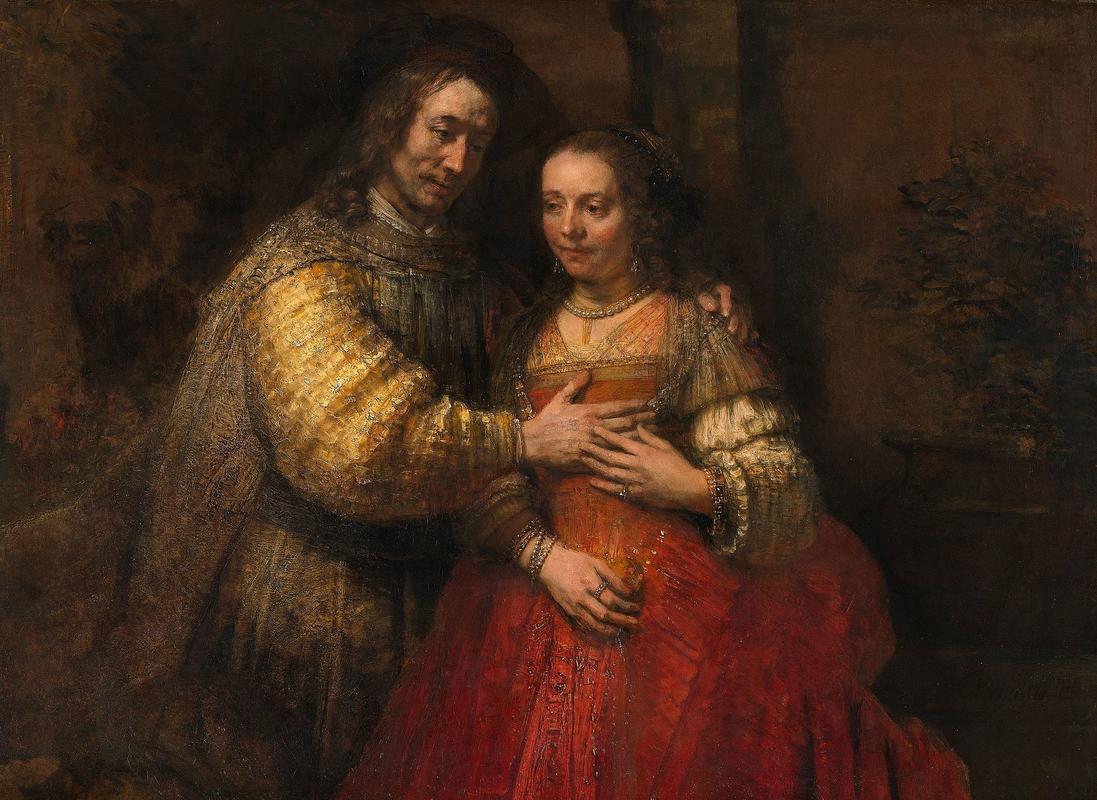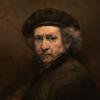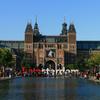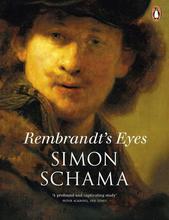More about The Jewish Bride
- All
- Info
- Shop

Contributor
Rembrandt's Isaac and Rebecca or The Jewish Bride, shows a steamy moment important to two big monotheistic faiths we all know and love.
The scene shown occurs right before King Abimelech, who is letting them stay at his place, to which they fled to escape a famine, catches them in a fib. Yitzchak ("Isaac") is the son of Avraham and Sarah, the patriarch and matriarch of monotheism. Like Avraham and Sarah did to protect themselves from the ancient Egyptians, Yitzchak and Rivka ("Rebecca") pretend to be brother and sister in order to avoid retaliation from the jealous men of Abimelech's kingdom, as Rivka was a beautiful woman. Abimelech looks through a window at them and sees them "playing," or "fooling around," and realizes they lied to him! In the end, though, he's cool about it. What a relief!
Yitzchak and Rivka were Semites who were in the sun a lot, and they would have looked more like the Yemeni singer Shoshana Damari, the Iraqi-Israeli poet Almog Behar, or contemporary Arabs, than the figures in this painting. By casting his son Titus and daughter-in-law Magdalena van Loo as Yitzchak and Rivka, Rembrandt is making a statement about the universal appeal of the story, but he also runs the risk of confusing people into thinking that the Bible is about a bunch of white folks in Europe.
Earlier in Yitzchak's life, after surviving a scary incident where his dad almost sacrificed him, until receiving orders from the Creator not to go through with it, Yitzchak wants to get married. Avraham's servant, Eliezer, meets a young woman, Rivka, who fulfills his prophetic request, which goes like this: "If the girl should say to me: 'Drink, and also I will give your camels to drink,' she is the one You have designated for…Yitzchak." Rivka gives water to all of Eliezer's camels in the most spirited, energetic kind of way. Eliezer is impressed, and instead of giving her a five-star Yelp review, he gets the wheels rolling for her to marry Yitzchak, with her cooperation of course.
Sources
- Bevers, Holm, et al. Drawings by Rembrandt and His Pupils: Telling the Difference. Los Angeles: Getty, 2009.
- Bockemühl, Michael. Rembrandt, 1606-1669: The Mystery of the Revealed Form. Köln: Taschen, 2000.
- Coopersmith, Dina. "Women in the Bible #2: Rivka." Aish.com, https://www.aish.com/jl/b/women/Women_in_the_Bible_Rivka.html?mobile=yes.
- Durham, John I. The Biblical Rembrandt: Human Painter in a Landscape of Faith. Macon, GA: Mercer University Press, 2004.
- Genesis 26. Sefaria, https://www.sefaria.org/Genesis.26?lang=bi&aliyot=0.
- Green, Emma. "Are Jews White?" The Atlantic, Dec. 5, 2016, https://www.theatlantic.com/politics/archive/2016/12/are-jews-white/509….
- Slive, Seymour. Rembrandt Drawings. Los Angeles: Getty, 2019.
Featured Content
Here is what Wikipedia says about The Jewish Bride
The Jewish Bride (Dutch: Het Joodse bruidje) is a painting by Rembrandt, painted around 1665‒1669.
The painting gained its current name in the early 19th century, when an Amsterdam art collector identified the subject as that of a Jewish father bestowing a necklace upon his daughter on her wedding day. This interpretation is no longer accepted, and the identity of the couple is uncertain. The ambiguity is heightened by the lack of anecdotal context, leaving only the central universal theme, that of a couple joined in love. Speculative suggestions as to the couple's identity have ranged from Rembrandt's son Titus and his bride, or Amsterdam poet Miguel de Barrios and his wife. Also considered are several couples from the Old Testament, including Abraham and Sarah, Boaz and Ruth, or Isaac and Rebekah, which is supported by a drawing by the artist several years prior.
While technical evidence suggests that Rembrandt initially envisioned a larger and more elaborate composition, the placement of his signature at lower left indicates that its current dimensions are not significantly different from those at the time of its completion. According to Rembrandt biographer Christopher White, the completed composition is "one of the greatest expressions of the tender fusion of spiritual and physical love in the history of painting."
The painting is in the permanent collection of the Rijksmuseum in Amsterdam.
-
Detail of the hands
-
Drawing of Isaac and Rebeccah spied upon by Abimelech, by Rembrandt, c. 1662
-
Other Jewish Bride, by Rembrandt, 1641
Check out the full Wikipedia article about The Jewish Bride













